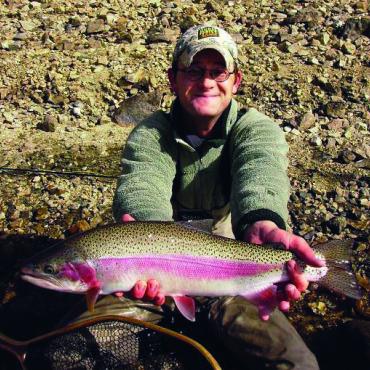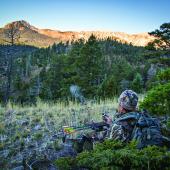Straight Shootin'
It’s finally here: day and night are in sync with similar hourly spans, frost has been spied on the pumpkins, and a rack or two has been spotted in the back of a passing pickup. It’s autumn, and in Montana that means only one thing: HUNTING SEASON! However, doubt tends to cause more than a little trepidation regarding the readiness of your gun, gear, and physique this time of year. The following should quell some of that doubt—the rest is up to fate.
Better Bullets
As a professional hunting guide, I find myself in constant surprise at the blind faith hunters put in factory ammo that shoots well on paper, but has the penetration and killing force of a slingshot. Despite what the latest issue of Chix ‘n Ammo might say, any and all ammunition needs to be field-tested for knockdown power. Many .22’s can put down good groups on a target, but no sane person would try to harvest anything bigger than a rabbit with that round. The same goes for any ammo one might purchase or hand-load. Shooting at a phone book is one of the best ways to figure out which ammo is worthy of your quarry—and which is best left for aerating aluminum cans.
At the range, you should fire your ammo at 100, 200, and 350 yards—distances you’ll encounter in a typical hunting situation. If you plan on taking longer shots than this, put some basic stalking and hunting skills at the top of your preparation list. If the ammo you’re using doesn’t penetrate and begin to separate by the middle section of the yellow pages at 250 yards, it’s time to consider better ammo. Good shot groupings are great, but if your chosen round can’t punch through the “P” section in the back of the phonebook, you’ll just wound the elk—and you’ll be eating shame burgers for the rest of the season.
Real World Shooting
Shooting ranges are great places to find out how your rifle shoots. Perfect rests, stationary targets, and a calm state of mind transform any shooter into Annie Oakley. But consider a typical hunting shot: stress, elevated heart rate and respiration, uneven terrain, unsteady rest, moving and breathing targets, physical exertion, wind, elevation, barometric pressure, and a host of other variables can all turn a hit on the range into a miss or a wounded critter in the field. Practice shooting at the range in positions you’ll use in the field, and carry your rifle and hunting pack along on scouting excursions.
Tie a few inflated dollar-store balloons to various places in your hunting area, including the farthest point of your comfortable shooting distance. Measure the balloons with a range finder or step off the yardage to your hide or preferred shooting spot. Balloons will move with the wind, creating a lifelike target that shifts and undulates like an actual animal. Utilize any steady rest possible: pack, rock, log, bipod, or off-hand—whatever you’d use in the field hunting big game. If you can hit all those balloons after the hike to your hide, the chances of a freezer full of goodness just became that much more possible.
Round Is Not a Shape
Season after season, I’m confronted by numerous examples of America’s obesity epidemic. If your waist measurement is longer than your inseam, the best rifle and ammo in the world won’t make any difference. Hunting is highly physical—the days of shooting game from logging roads and pickup windows are over. Do jumping jacks before sighting in a rifle at the range. If ten makes you unable to take a clean shot, a good exercise program and change in diet might be in order.
Hunting and killing any big game in Montana takes a certain amount of fortitude—and in the long run, so does living a healthy life. When preparing for a hunt, be honest with yourself: if running a mile with your daypack and rifle seems as likely as winning the lottery, sit this season out. Shoot, exercise, scout, and prepare for next year instead. With the proper amount of time, planning, exercise, and consideration, that trophy is just a tag away.
Kurt Dehmer owns Durty Kurty's Guide Service and is a frequent contributor to Outside Bozeman.












